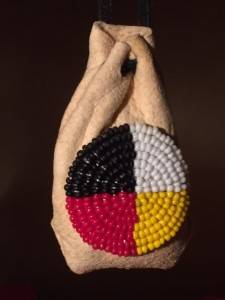
Until recently, the public faces of addiction recovery in the United States have been those of privileged white men and women. When I began to reconstruct the history of recovery on America more than four decades ago, I was struck by the absence in the historical literature of accounts of recovery within communities of color. I vowed early in my own historical research to help fill this void. Through my collaborations with Don Coyhis and Mark Sanders and the contributions of other advocates and scholars, progress has been made in reconstructing the history of recovery within Native American and African American communities. These contributions include a newly posted paper acknowledging African Americans who have made significant contributions within the history of addiction treatment and recovery in the United States. (See here). Needed research on the history of recovery in other ethnic communities remains at its infancy.
To the extent that existing findings from Native American and African American research can be extended to all communities of color, several conclusions are worthy of note.
- Historically, portrayals of the etiology of alcohol and other drug (AOD) problems within communities of color have been rooted in allegations of genetic inferiority (e.g., "firewater myths" portraying Native Americans as inherently vulnerable to alcoholism), psychopathy (sin/evilness), and cultural inferiority (e.g. community disorganization). Such portrayals have been part of the larger ideological rubric supporting the decimation and colonization of these communities. The cultural legacies of such portrayals include generations of stigma (e.g., the "drunken Indian" stereotype), racial shame, and a fundamental misconstruction of the sources of, and solutions to, alcohol and other drug problems in communities of color.
- Communities of color have not been passive victims in the face of alcohol and other drug (AOD) problems; there are long histories of indigenous resistance and recovery movements within these communities.
- Indigenous resistance and recovery movements within communities of color have been most often led by people in recovery who linked addiction to broader issues of oppression and linked their own personal recovery to the broader cultural, political, and economic liberation of their people.
- Within communities of color, the healing of the individual, the family, and the community are inseparable.
- The ultimate solutions to AOD problems within communities of color lie within these communities and within larger processes of cultural renewal and community revitalization.
- Addiction treatment and recovery support services within communities of color are best framed within a broader concern for the global health of these communities, rather than within a singular focus on AOD-related problems.
- Addiction treatment is at its best when it aligns itself with culturally indigenous pathways of recovery and indigenous healing rituals.
- The history of resistance and recovery within communities of color stands as testimony to the cultural forces of prevention and healing that remain powerful, but underutilized, antidotes to AOD problems.
It is time that both addiction and recovery were presented in a rainbow of colors. Below is a partial chronological listing with links to some of the published work to date resulting from these collaborations.
Coyhis, D. & White, W. (2002) Addiction and recovery in Native America: Lost history, enduring lessons. Counselor 3(5):16-20.
White, W. & Sanders, M. (2002) Addiction and recovery among African Americans before 1900. Counselor, 3(6):64-66.
Coyhis, D. & White, W. (2003) Alcohol problems in Native America: Changing paradigms and clinical practices. Alcoholism Treatment Quarterly, 3/4:157-165.
White, W. (2003). Native American resistance to alcohol problems since first contact. Well Nations Magazine, 4(23) & 4(24). Posted at http://www.whitebison.org/magazine/2003/volume4/vol4no23.html
http://www.whitebison.org/magazine/2003/volume4/vol4no24.html
Coyhis, D. & White, W. (2006) Alcohol problems in Native America: A new and provocative history. Counselor, 7(4), 54-56.
Coyhis, D. & White, W. (2006). Alcohol Problems in Native America: The Untold Story of Resistance and Recovery-The Truth about the Lie. Colorado Springs, CO: White Bison, Inc. ?
Sanders, T., Sanders, M. & White, W. (2006). When I Get Low, I Get High?: The portrayal of addiction and recovery in African American music, Counselor, 7(6), 30-35.
White, W., Sanders, M. & Sanders, T. (2006). Addiction in the African American community: The recovery legacies of Frederick Douglass and Malcolm X. Counselor, 7(5), 53-58.
White, W. (2008) The Native American Wellbriety Movement: An Interview with Don Coyhis. Wellbriety Magazine, 9(10), 2-10.
White, W., & Sanders, M. (2008). Recovery management and people of color: Redesigning addiction treatment for historically disempowered communities. Alcoholism Treatment Quarterly, 26(3), 365-395.
Evans, A.C., Achara, I., Lamb, R.& White, W. (2012). Ethnic-specific support systems as a method for sustaining long-term addiction recovery. ?Journal of Groups in Addiction and Recovery. 7(2-4), 171-188.?
Sanders, M. & White, W. (2016). African Americans who made (and are making) a difference in promoting resistance to and recovery from alcohol and other drug problems. Posted at http://www.williamwhitepapers.com/pr/2016%20African%20American%20Pioneers%20in%20Recovery.pdf